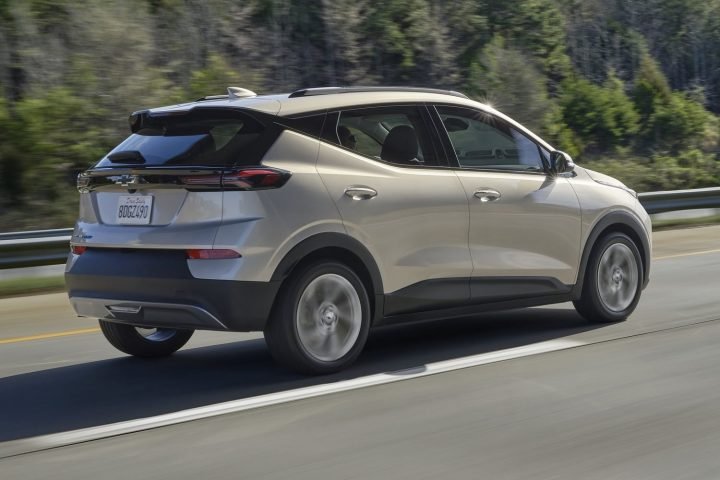New Chevrolet Bolt EV Set to Become GM’s Next Autonomous Ride-Hailing Vehicle
GM’s plans to utilize the Cruise Origin as an autonomous taxi service have been put on hold.
New Chevrolet Bolt EV – GM’s Upcoming Autonomous Vehicle for Cruise Robotaxi Service
Utilization of the Cruise Origin for autonomous taxi services is currently postponed.
GM Latest News
Have you heard about the Cruise Origin? It was a unique self-driving pod designed by GM without a steering wheel or pedals intended to be used as a robotaxi. However, GM has decided to put this plan on hold due to setbacks at Cruise, its self-driving vehicle division.
The automaker is now looking forward to the launch of the new Chevrolet Bolt in 2025. They plan to use this small electric crossover as their robotaxi instead of the Cruise Origin.
Detroit Made
For years, the intention was to produce the purpose-built Cruise Origin at Factory Zero, the GM facility in Detroit-Hamtramck dedicated to manufacturing other electric vehicles such as the GMC Hummer EV. The Origin, a collaborative effort between GM, Cruise, and Honda, is a spacious six-passenger ride-sharing van characterized by its boxy design and unique features like large sliding doors that open from the center resembling a tram, along with a conveniently low load floor.
Giant Setback for Cruise
After one of its test vehicles was involved in an incident where a pedestrian was dragged in San Francisco last October, Cruise faced a significant setback. As a result, California suspended the company’s self-driving license, prompting Cruise to pause testing and halt production of the Origin after creating a small fleet of pre-production vehicles. This decision led to a substantial $600 million financial loss, an investigation into Cruise’s operations, and the departure of key executives.
Cruise’s Resurgence
Despite these challenges, Cruise has made a comeback by relaunching modified Bolt test vehicles for supervised driving in Houston, Phoenix, and Dallas. Additionally, a new CEO has been appointed to spearhead the company’s efforts. However, the future of the Origin vehicle remains uncertain.
Chevy Bolt’s Compliance Advantage
In a recent investor call about GM’s Q2 earnings, GM’s CEO, Mary Barra, highlighted that opting for the next-gen Bolt EV instead of the unique Origin vehicle offers a better chance at regulatory compliance. The Bolt EV enables scaling to reduce costs and meet standards more effectively than the Origin, which lacks manual control for drivers to intervene. Barra emphasized that obtaining approval for the Origin proved challenging, hampering Cruise’s expansion. By transitioning to the Bolt, GM mitigates this regulatory barrier and associated risks.
Latest Updates on the Bolt EV
The new Bolt EV features a more traditional design that may attract a wider audience of drivers. Its predecessor, the previous Bolt EV, was discontinued, but not before making significant contributions as a driverless test vehicle for Cruise, logging an impressive 5 million miles. The upcoming Bolt promises to be a more sophisticated and eco-friendly electric vehicle, with improvements that should facilitate smoother regulatory approval processes.
New Safety Goals Set by GM
GM and Cruise remain committed to autonomous vehicle development. Cruise’s team is actively working on building an advanced AI platform to ensure their robotaxis surpass the safety standards of even the best human drivers.
In early 2022, Cruise requested regulatory approval to operate a fleet of up to 2,500 self-driving vehicles annually. These vehicles are designed without traditional controls like steering wheels, pedals, mirrors, turn signals, or windshield wipers, as they are fully autonomous. GM views this robotaxi fleet as a promising revenue stream for the future.
Despite technological challenges, GM’s CEO, Barra, expresses confidence in Cruise’s progress and direction. She mentions the division’s receptiveness to potential partnerships and investments, noting the growing interest from external parties.

